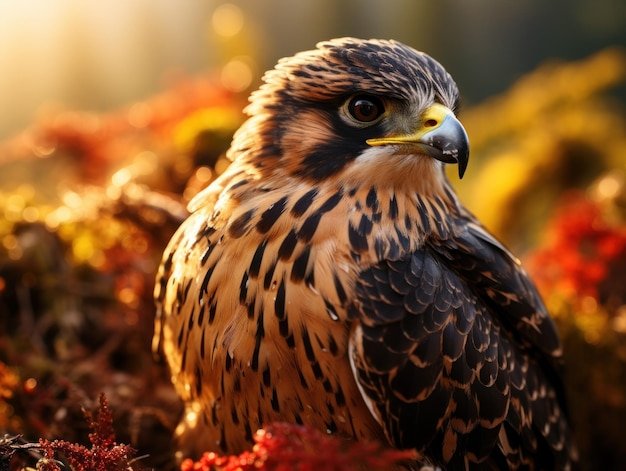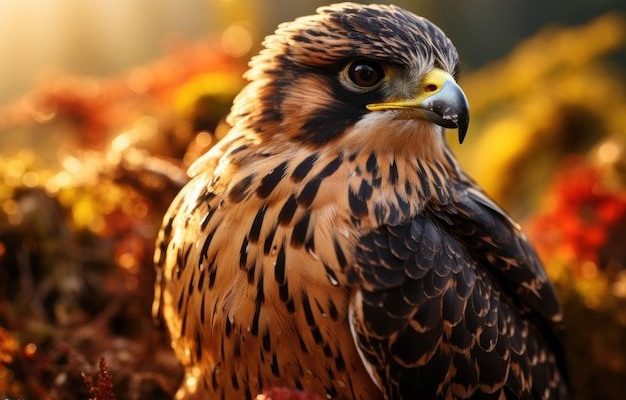
Let’s think of the ecosystem as a giant puzzle. Each piece, from the tiniest insect to the majestic falcon, contributes to the overall picture. If you take out one of those pieces, the whole puzzle can become unbalanced. So, what exactly do falcons do to keep nature’s puzzle intact? Grab a cup of coffee, and let’s dive into the world of these fascinating birds and their vital contributions.
What Are Falcons?
Falcons belong to the Falconidae family, comprising various species known for their speed and hunting prowess. You might’ve heard of the Peregrine Falcon, the fastest bird in the world, reaching speeds of over 240 miles per hour during its characteristic hunting stoop or dive. They have sharp beaks and talons designed specifically for catching prey, which often includes small birds and mammals.
Interestingly, falcons are built for performance. Their streamlined bodies and powerful wings enable them to chase down prey with remarkable agility. But they aren’t just athletes—they’re also crucial players in their environment. Think of them as nature’s pest control. By preying on various species, they help keep populations in check, ensuring no single species overwhelms an ecosystem. In essence, falcons add a layer of balance to the natural world.
The Predator-Prey Dynamic
One of the most fascinating aspects of falcons is their role in the predator-prey dynamic. By hunting smaller animals, they prevent overpopulation and the consequent depletion of resources. For example, if a particular rodent species flourishes unchecked, it can lead to a reduction in plant life, as these rodents consume vast amounts of vegetation.
This balance isn’t just about numbers; it also enhances biodiversity. When falcons control rodent populations, they enable other species that share the same habitat to thrive, creating a more vibrant ecosystem overall. Plus, the presence of falcons can even influence the behavior of other animals. For instance, the awareness of being in a falcon’s territory can lead to heightened vigilance among smaller birds, promoting caution and survival strategies.
Case Study: The Peregrine Falcon
Take the Peregrine Falcon as a prime example. After facing drastic declines due to pesticide use in the mid-20th century, conservation efforts helped restore their numbers. Today, they serve as a vital indicator of ecosystem health. Their presence often signals a balanced environment, where air and water quality meet the needs of various species. Healthy falcon populations indicate that the ecosystems they inhabit are thriving.
In urban areas, Peregrines have adapted remarkably well, often nesting on skyscrapers and hunting pigeons. This adaptation shows how they can influence urban ecosystems, demonstrating their extraordinary adaptability and essential role in both rural and urban environments.
Food Web Interactions
Falcons don’t exist in isolation; they are integral parts of complex food webs. As top-tier predators, they sit at the apex, impacting various levels of the food web. Their hunting patterns can affect the populations of not just their direct prey but also other animals that share the same food sources.
For instance, by preying on small mammals or birds, falcons can reduce competition among other predators. This dynamic also helps maintain plant health, as fewer herbivores mean less plant consumption. It’s like keeping the scales balanced: when one side gets too heavy, everything tips over.
Here’s the thing: every ecosystem is unique, and the exact impact of falcons can vary based on their habitat and available food. In some areas, falcons might primarily hunt birds, while in others, they might focus on small mammals or insects.
Indicators of Ecosystem Health
Falcons are excellent bioindicators, meaning their population health reflects the overall state of the environment. If falcon numbers are declining, it often signals that something is amiss. This could relate to habitat loss, pollution, or changes in prey populations, all of which can have cascading effects throughout the ecosystem.
Conservationists closely monitor falcon populations to understand ecosystem health. For example, the decline of certain falcon species around industrial areas can indicate poor air quality or habitat degradation. By focusing efforts on protecting falcons, these initiatives can also safeguard a myriad of other species sharing their habitat.
Understanding falcons as bioindicators emphasizes the interconnectedness of life. Protecting their habitats can bolster entire ecosystems, showcasing why every creature, no matter how small or seemingly insignificant, plays a role.
Conservation Efforts
As majestic as falcons are, they face threats like habitat loss, climate change, and human activities. Conservation efforts have become essential in ensuring these birds can continue their ecological roles. From establishing protected areas to monitoring populations, various strategies aim to stabilize and grow falcon numbers.
One notable initiative is the Falcon Breeding Program, where endangered species are bred in captivity and released into the wild. This approach has successfully increased populations of various falcon species. Community involvement is also crucial; educating the public about the importance of falcons can foster a protective mindset.
Moreover, sustainable practices in agriculture and urban development can help reduce habitat destruction. By advocating for policies that protect the environments falcons rely on, we can ensure they continue to thrive as essential members of their ecosystems.
The Cultural Significance of Falcons
Beyond their ecological roles, falcons have captured human imagination for centuries. In various cultures, they symbolize speed, grace, and freedom. Historical figures, such as royalty in medieval times, often kept falcons for sport. This connection has paved the way for a deeper appreciation of their importance in our ecosystems.
Even today, falcons are important symbols in wildlife conservation, representing broader efforts to maintain biodiversity and protect the environment. They remind us of the delicate balance in nature and why every species matters. Their sleek form and incredible abilities inspire art, literature, and even technology, showing how much they resonate with humanity.
How You Can Help
You might be wondering, “What can I do to support falcons and their ecosystems?” There are several ways to make a difference:
- Support conservation organizations: Engage with groups focused on protecting falcons and their habitats.
- Educate others: Share knowledge about falcons and their roles in the environment to raise awareness.
- Promote sustainable practices: Advocate for eco-friendly agriculture and urban policies that protect wildlife habitats.
- Participate in citizen science: Join local projects to monitor falcon populations and contribute to data collection.
Every little bit helps. By becoming an advocate for these remarkable birds, you contribute to a healthier ecosystem for all.
In summary, falcons are more than just swift hunters; they are vital players in the balance of nature. Their ability to regulate prey populations, act as bioindicators, and inspire cultural significance underlines their importance. By understanding and protecting these incredible birds, we take steps towards preserving the intricate web of life that sustains us all. So, next time you spot a falcon soaring overhead, take a moment to appreciate its role in keeping our ecosystems vibrant and healthy.

